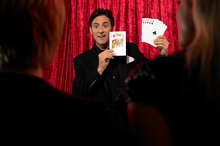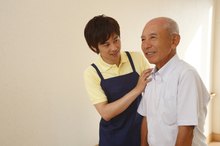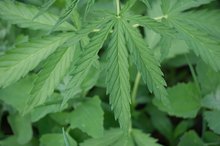How to Interpret the House-Tree-Person Test
The house-tree-person test can be an effective way to evaluate children, people with brain damage and people with a limited ability to communicate for personality disorders 2. A projective personality test, the house-tree-person test requires the test taker to draw a house, a tree and a person 3. The test is then used as a measure of self-perception, outlook and sometimes brain damage. Interpretations of the test are subjective, and based loosely on a set of basic principles.
Read more about a list of psychological tests.
House Interpretations
Notice the size of the house: a small house represents renunciation of family life, while a large house means the person is overwhelmed by his family.
What Is the Meaning of Purple Ribbon?
Learn More
Observe the walls of the house: weak lines represent fragility in the ego, while strong lines mean the need to fortify boundaries.
Determine the amount of detail put into the roof: the more detail, the more the person concentrates on fantasies, while an incomplete roof means evading formidable ideas.
Affective Symptoms in Mental Health
Learn More
Note the inclusion of windows, doors and sidewalks, which indicate openness to interacting with other people.
Discern the inclusion of bushes, shades, shutters, bars and curtains, which indicate a person’s hesitation to open himself to others.
- Notice the size of the house: a small house represents renunciation of family life, while a large house means the person is overwhelmed by his family.
- Observe the walls of the house: weak lines represent fragility in the ego, while strong lines mean the need to fortify boundaries.
Tree Interpretations
Notice the size of the trunk: a small trunk represents a weak ego, while a large trunk means a larger ego.
Observe whether the trunk is split in half, which indicates a split personality.
Determine what kind of limbs were drawn: detached or small branches represent a difficulty communicating with others, big branches mean connecting with others too much, pointy branches indicate hostility and dead branches represent desolation.
Note whether leaves are included: drawing leaves represents successfully connecting with others, while no leaves means emptiness and detached leaves indicates a lack of nurturance.
Discern the details of the roots of the tree: while normal roots represent a grounded person, a lack of roots means instability, exaggerated roots indicate an obsession with examining reality and dead roots represent feeling completely removed from reality.
- Notice the size of the trunk: a small trunk represents a weak ego, while a large trunk means a larger ego.
- Note whether leaves are included: drawing leaves represents successfully connecting with others, while no leaves means emptiness and detached leaves indicates a lack of nurturance.
Person Interpretations
Notice the position of the arms: open arms represent an inclination to connect with others, closed arms mean hostility and disconnected arms indicate defenselessness.
Observe the position of the hands: pointed fingers and balled fists represent hostility, while hidden or gloved hands mean antisocial tendencies.
Note the details of the legs and feet: figures cut off at the bottom of the paper represent powerlessness, while both large and small feet mean the need for greater stability.
Determine the details of the mouth: an open or large mouth represents dependence, a closed mouth means rejection of needs and a slash mouth or teeth indicate verbal hostility.
Discern how detailed the face is: the use of more facial details indicates a person’s need to portray himself in an acceptable way.
Read more about early childhood development assessment tools.
Tips
Consult someone trained in administering the house-tree-person test for most accurate interpretations. Remember that the test is subjective, and that the meaning of details of a drawing may differ between test takers.
- Notice the position of the arms: open arms represent an inclination to connect with others, closed arms mean hostility and disconnected arms indicate defenselessness.
Related Articles
References
Tips
- Consult someone trained in administering the house-tree-person test for most accurate interpretations.
- Remember that the test is subjective, and that the meaning of details of a drawing may differ between test takers.
Writer Bio
Jaime Coyne has been writing professionally since 2003. She has been published in "Spectrum" newspaper, "Prism" literary magazine, "The Colgate Maroon-News," "The Public Eye" magazine, "Panorama" magazine and on various websites. Coyne has a bachelor's degree in English with an emphasis in creative writing from Colgate University.









